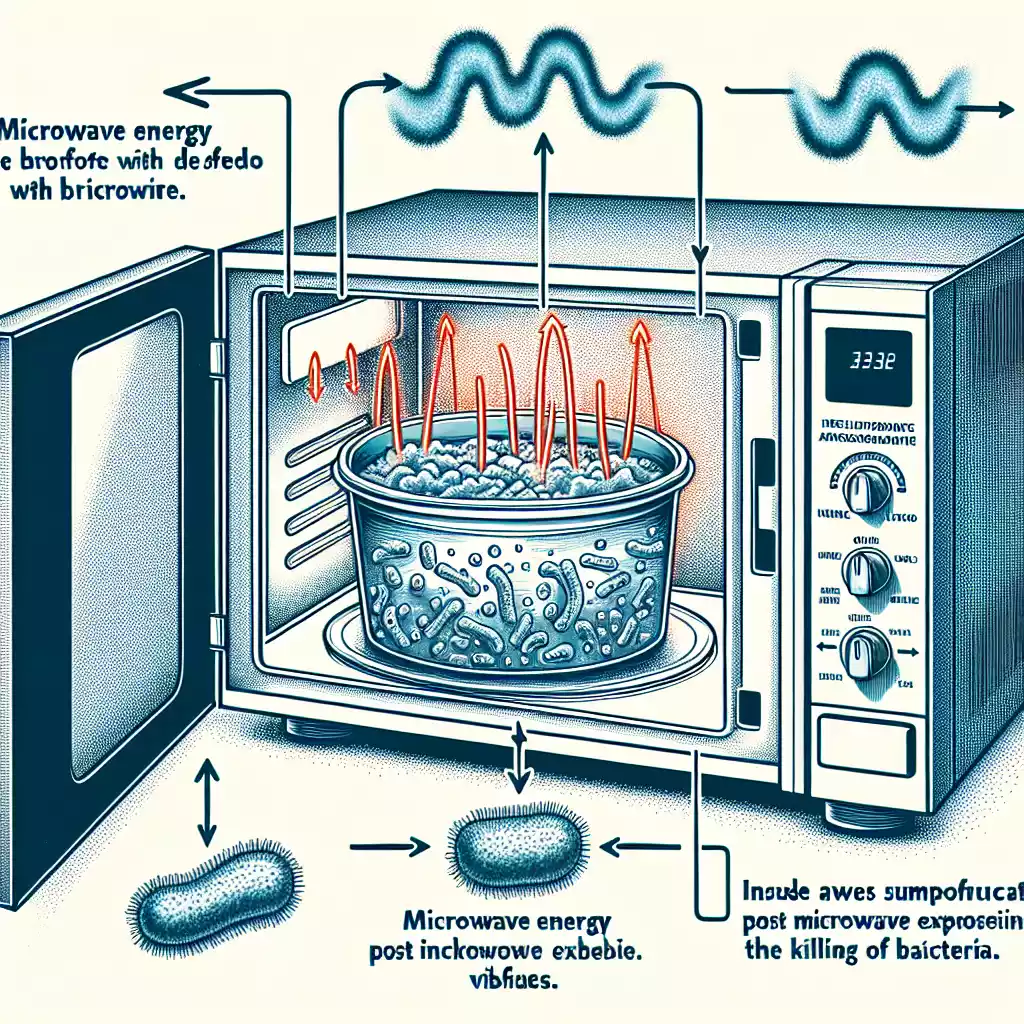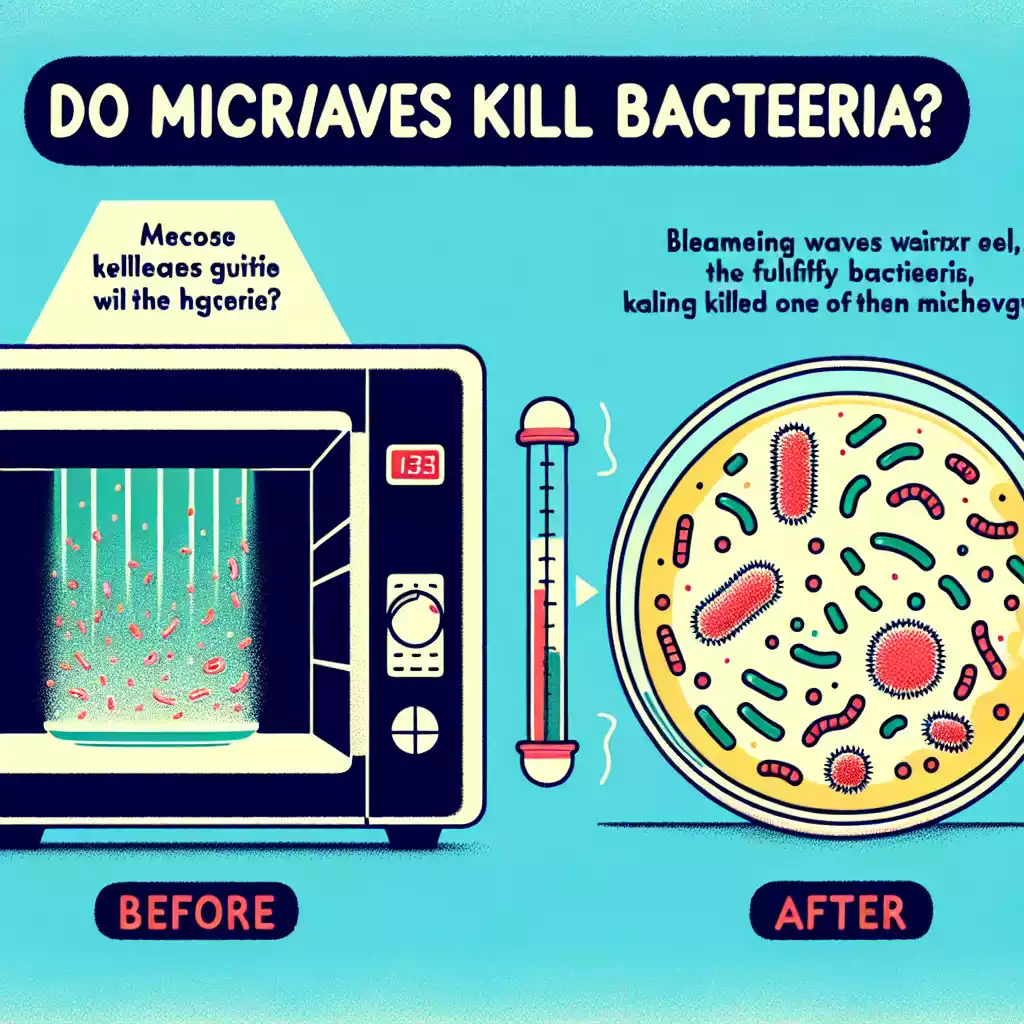Understanding Microwave Technology
How Microwaves Work
Microwaves, a type of electromagnetic radiation, are used in microwave ovens to heat food. When you press start, the microwave oven emits waves that cause water molecules in the food to vibrate. This vibration produces heat, which cooks the food. The key lies in the microwave’s ability to penetrate food, making it a quick and efficient cooking method.
History of Microwave Ovens
Microwave ovens have an interesting history. They were discovered accidentally by Percy Spencer, an engineer working on radar technology during World War II. In 1945, Spencer noticed that a chocolate bar in his pocket had melted due to microwave radiation. This serendipitous discovery led to the development of the first microwave oven, which was introduced to the public in the late 1940s. Since then, microwaves have become a staple in kitchens worldwide.
The Science Behind Bacteria Elimination
Heat and Bacteria
Bacteria are microscopic organisms that can cause foodborne illnesses. Heat is a known enemy of bacteria, as it denatures the proteins and disrupts the cell membranes, leading to bacterial death. To effectively kill bacteria, food must reach a specific temperature for a certain amount of time. For example, most harmful bacteria are killed at temperatures above 165°F (74°C).
Microwave Penetration and Heat Distribution
Microwaves penetrate food to varying depths, depending on the food’s composition and density. This penetration allows for rapid heating, but it can also lead to uneven temperature distribution. Cold spots in the food may harbor surviving bacteria, which is why thorough heating and proper techniques are essential for ensuring food safety.
Common Bacteria Found in Food

Salmonella
Salmonella is a common bacterium that can cause food poisoning. It is often found in raw poultry, eggs, and unpasteurized milk. Symptoms of Salmonella infection include diarrhea, fever, and abdominal cramps. Proper cooking, including using a microwave, can kill Salmonella if the food reaches the necessary temperature.
E. coli
E. coli is another bacterium that can lead to severe foodborne illness. It is commonly associated with undercooked ground beef, raw vegetables, and contaminated water. E. coli infections can cause severe stomach cramps, diarrhea, and vomiting. Heating food to the appropriate temperature can effectively kill E. coli.
Listeria
Listeria is a bacterium found in soil, water, and some animals. It can contaminate raw milk, soft cheeses, and ready-to-eat deli meats. Listeria infections can be particularly dangerous for pregnant women, newborns, and individuals with weakened immune systems. Proper heating, including microwave cooking, can help eliminate Listeria.
Factors Affecting Microwave Efficiency in Killing Bacteria
Power Levels and Cooking Time
The power level and cooking time in a microwave oven significantly impact its ability to kill bacteria. Higher power levels and longer cooking times generally lead to better bacterial elimination. However, it’s crucial to balance these factors to avoid overcooking or drying out the food.
Food Density and Composition
The density and composition of the food also play a role in how effectively microwaves kill bacteria. Dense foods may heat unevenly, leading to cold spots where bacteria can survive. Additionally, foods with high fat content may heat more slowly than those with high water content. Understanding these factors can help you adjust cooking times and techniques to ensure food safety.
Best Practices for Using Microwaves to Kill Bacteria
Proper Heating Techniques
To effectively kill bacteria in a microwave, follow these guidelines:
• Stir or rotate food during cooking to ensure even heating.
• Cover food with a microwave-safe lid or wrap to trap steam and promote even heating.
• Use a food thermometer to check that the internal temperature reaches at least 165°F (74°C).
Using Microwave-Safe Containers
Using the right containers is essential for safe microwave cooking. Opt for microwave-safe glass, ceramic, or plastic containers. Avoid using metal or containers with metal accents, as they can cause sparks and damage the microwave. Also, be cautious with plastic containers that are not labeled as microwave-safe, as they may release harmful chemicals when heated.
Common Mistakes to Avoid
Uneven Heating
Uneven heating is a common issue with microwave cooking. To avoid this, arrange food evenly on the plate and stir or rotate it during cooking. Using a microwave-safe cover can also help distribute heat more evenly.
Overcrowding the Microwave
Overcrowding the microwave can lead to uneven heating and cold spots. Ensure there is enough space around the food for microwaves to circulate. If necessary, cook food in smaller batches to achieve better results.
Alternatives to Microwaves for Killing Bacteria
Conventional Ovens
Conventional ovens are a reliable alternative for killing bacteria. They provide even heat distribution and can reach higher temperatures than microwaves. Baking, roasting, and broiling are effective methods for cooking food thoroughly and ensuring it is safe to eat.
Boiling and Steaming
Boiling and steaming are other effective methods for killing bacteria. These methods use high temperatures to cook food evenly. Boiling is particularly effective for liquids and vegetables, while steaming is ideal for preserving the nutrients in food.
Relevant Data Table
| Bacteria | Common Sources | Safe Cooking Temperature |
|---|---|---|
| Salmonella | Poultry, eggs, unpasteurized milk | 165°F (74°C) |
| E. coli | Ground beef, raw vegetables, contaminated water | 160°F (71°C) |
| Listeria | Raw milk, soft cheeses, deli meats | 165°F (74°C) |
FAQs
Can microwaves kill all types of bacteria?
Microwaves can kill most bacteria if the food reaches the appropriate temperature. However, some bacteria may be more resistant and require longer cooking times or higher temperatures.
How long should I microwave food to kill bacteria?
The time needed to kill bacteria depends on the food’s density and composition. Generally, food should be microwaved until it reaches an internal temperature of at least 165°F (74°C).
Are there any foods that shouldn’t be microwaved to kill bacteria?
Certain foods, like large cuts of meat or whole poultry, may not cook evenly in a microwave. It’s better to use conventional ovens or other cooking methods for these items.
Can microwaving food make it safe to eat if it was previously contaminated?
Microwaving can kill bacteria if done correctly. However, it’s essential to ensure the food reaches the necessary temperature throughout to avoid any risk of foodborne illness.
What are the signs that food has been properly microwaved to kill bacteria?
Using a food thermometer to check the internal temperature is the most reliable way to ensure food has been properly microwaved. Look for an internal temperature of at least 165°F (74°C).
Conclusion
In conclusion, microwaves can effectively kill bacteria in food if used correctly. Understanding the science behind microwave cooking, following best practices, and avoiding common mistakes can help ensure your food is safe to eat. Whether using a microwave or alternative cooking methods, always prioritize food safety to prevent foodborne illnesses.

